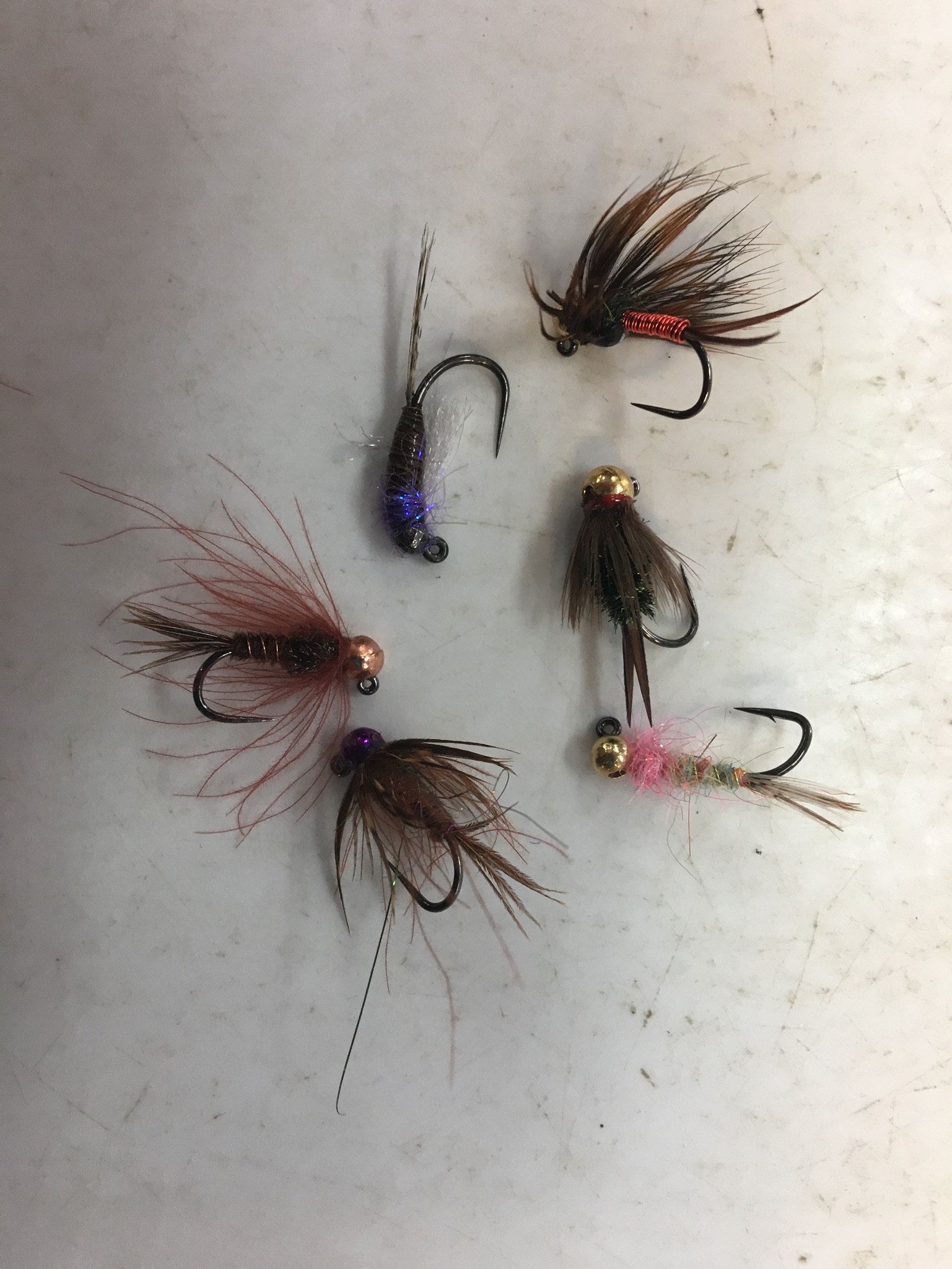
Most of the new flies we see year to year are variations on a theme. Yes, some of those variations are pretty juicy, but it’s rare that we come across an exciting new “genre” of flies altogether. Recently, we’ve been seeing more and more jig-head nymphs enter the market, and I think it’s a valuable addition to the angler’s arsenal.
In my mind, jig nymphs offer a couple of advantages, particularly to the novice angler. Their main feature is that they’re heavy for their hook size. Most of the new flies have tungsten beads, and those beads are larger relative to those on conventional hooks. That means the jig nymph will sink quickly to the depths, and do so without much, if any, added weight on the leader. A split shot on the leader creates something of a hinge. That hinge contributes to the nasty tangles that are the bane of even the experienced nymph angler. And it’s my belief at least that the hinging effect also reduces the naturalness of the drift and the angler’s ability to detect subtle strikes.
The idea of using a very heavy fly to “anchor” the drift is one of the primary feature of European nymphing styles. But there’s no reason why it wouldn’t apply to indicator nymphing as well. The less extra stuff between you and your fly, the better it’s going to fish (and cast).
Perhaps the jig-head nymphs really do drift more horizontally than conventional nymphs. I haven’t done the snorkeling to see if that’s truly the case. And many of the new jigs have a brightly-colored bead or “trigger spot” tied in behind the head. Again, the proof is in the pudding, and we also have more subtle jig-head patterns here at the shop, including jiggy variations on the Prince Nymph, Pheasant Tail, and Copper John. The choice is yours. But to me, the ability to “ditch the shot” is the big advantage of these new flies. And it’s one well worth giving a try.
0
Leave a Reply
You must be logged in to post a comment.